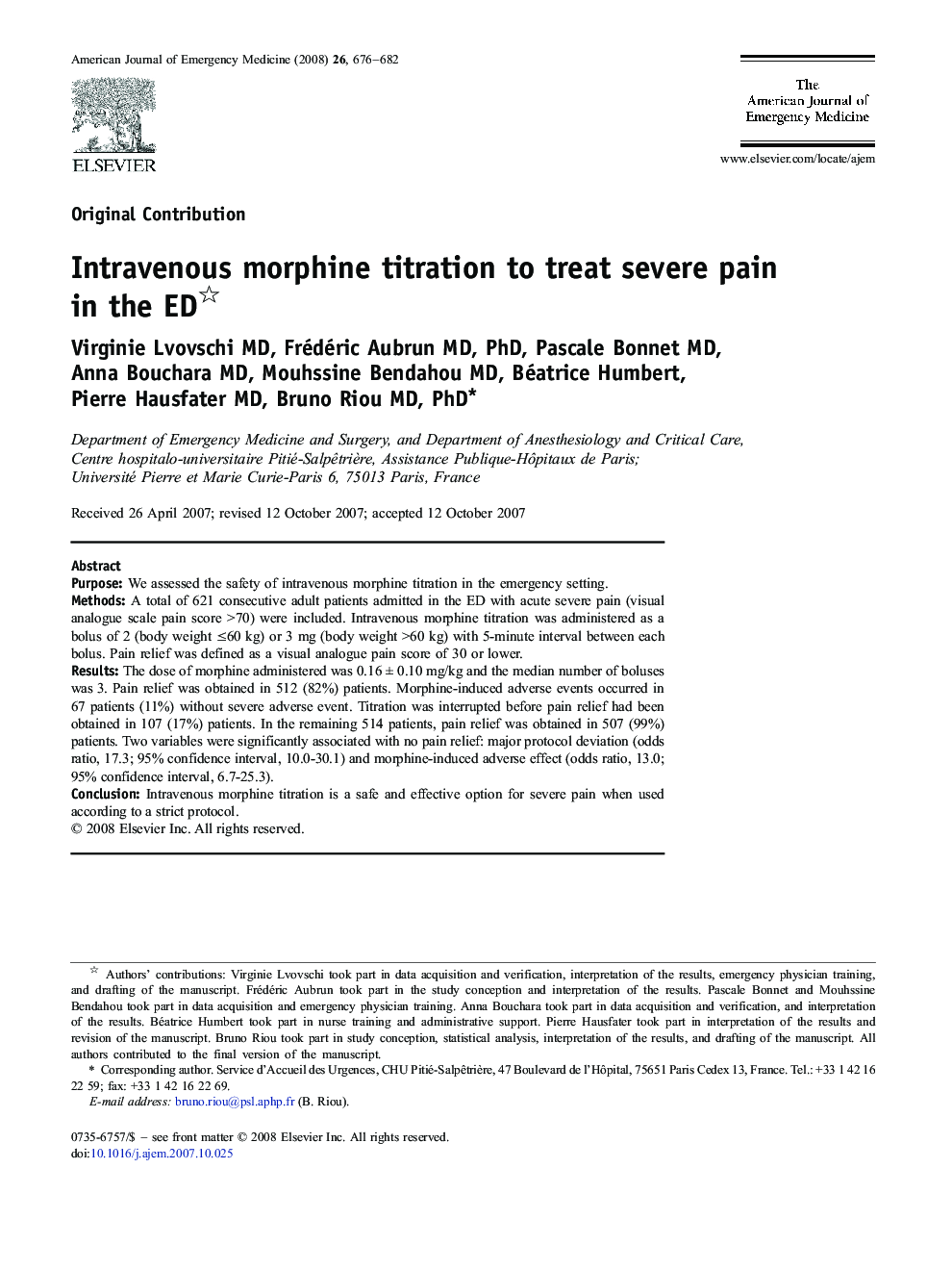| Article ID | Journal | Published Year | Pages | File Type |
|---|---|---|---|---|
| 3226190 | The American Journal of Emergency Medicine | 2008 | 7 Pages |
PurposeWe assessed the safety of intravenous morphine titration in the emergency setting.MethodsA total of 621 consecutive adult patients admitted in the ED with acute severe pain (visual analogue scale pain score >70) were included. Intravenous morphine titration was administered as a bolus of 2 (body weight ≤60 kg) or 3 mg (body weight >60 kg) with 5-minute interval between each bolus. Pain relief was defined as a visual analogue pain score of 30 or lower.ResultsThe dose of morphine administered was 0.16 ± 0.10 mg/kg and the median number of boluses was 3. Pain relief was obtained in 512 (82%) patients. Morphine-induced adverse events occurred in 67 patients (11%) without severe adverse event. Titration was interrupted before pain relief had been obtained in 107 (17%) patients. In the remaining 514 patients, pain relief was obtained in 507 (99%) patients. Two variables were significantly associated with no pain relief: major protocol deviation (odds ratio, 17.3; 95% confidence interval, 10.0-30.1) and morphine-induced adverse effect (odds ratio, 13.0; 95% confidence interval, 6.7-25.3).ConclusionIntravenous morphine titration is a safe and effective option for severe pain when used according to a strict protocol.
